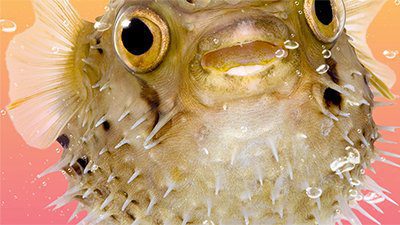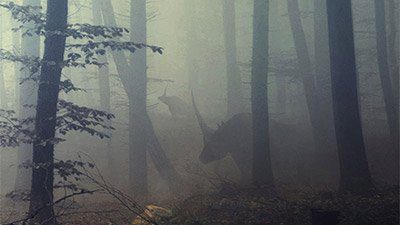Meet some cool
creatures with
weird and wild
defenses.
If you were ever stung by a bee, you
probably learned very quickly to
leave it alone! All around the world, we
see amazing animals with weird and wild
ways to defend themselves. But it hasn’t
always been this way. In the beginning,
when God made the world, it was “very
good.” Sadly, the first humans, Adam and
Eve, chose to disobey God. When they
sinned, all creation was cursed, and death
entered the world. Now, instead of eating
only plants, some animals eat other
animals. But our all-knowing and caring
God designed the original animal kinds
with features he knew they would need to
survive—including some wild defenses.
Terrible Toxins
Toxins are substances that can harm other life
forms. Venomous animals, like some snakes and
bees, inject their toxins with fangs or stingers.
One of the deadliest venomous animals in the
world is the box jellyfish, which injects toxins
with stinging cells on its tentacles. It has enough
venom to kill 60 adults!
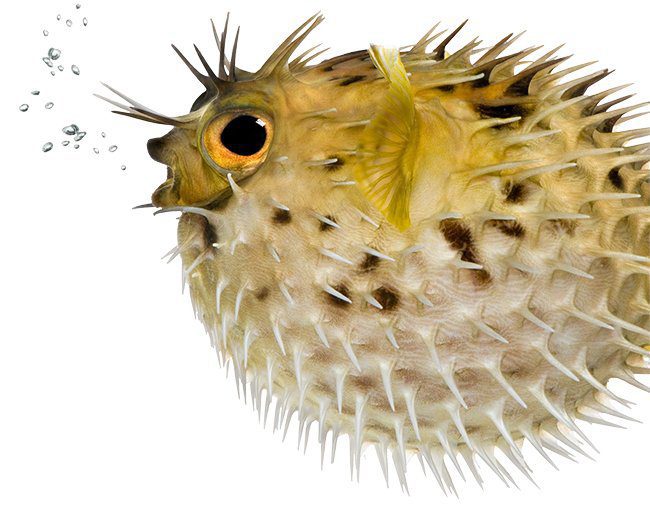
Porcupinefish
The toxins of poisonous animals are harmful if
eaten or absorbed through skin. Some species
of porcupinefish and pufferfish, which can blow
up like balloons to avoid being swallowed by
predators, are extremely poisonous. In fact, the
tiger pufferfish is one of the most poisonous
animals in the world. The toxins from just
one of these pufferfish can kill 30 people.
Copycat Critters
Venomous and poisonous animals
often use bright colors to announce, “I’m
dangerous!” For example, venomous coral
snakes are red, yellow, and black. Poisonous
monarch butterflies are orange and black.
Several nontoxic animals have been
equipped to copy the bright colors of toxic
animals to trick predators into staying
away. Harmless milk snakes look similar
to deadly coral snakes, so most
creatures leave them alone.
Other harmless creatures
are designed to mimic the
behavior of deadly animals,
like bull snakes that scare
off predators by imitating the
sound of rattlesnakes rattling.
Which Is Venomous?
A simple rhyme helps you
tell a venomous eastern
coral snake from a harmless
Nelson’s milk snake: “Red
on yellow kills a fellow.
Red on black venom lacks.”
Can you tell which snake is
venomous?
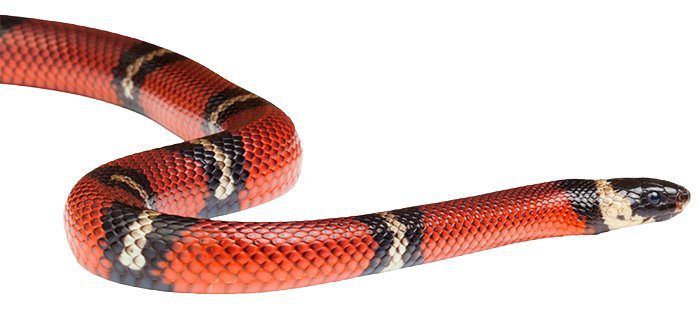

The venomous eastern
coral snake is the bottom image, while the upper image is the Nelson’s milk snake.

“So sneaky, right? Does this count as camouflage?”
Hide and Seek
Some animals disappear into the
background with a disguise known as
camouflage. Stick insects look exactly like
twigs on a tree. They even sway in the
breeze with the branches, making them
nearly impossible to spot.
Underwater, cuttlefish can change color
and texture to match their surroundings.
Their skin can go from smooth to rough in
half a second! This comes in handy when
swimming among corals, rocks, and sand
in the ocean.
No Bones About It
A few amphibians use their own bones as weapons.
Hairy frogs break their finger bones to use like claws.
Iberian ribbed newts will push their ribs through their
skin and coat them with poison. A jab from one of
these ribs can be deadly. Both hairy frogs and Iberian
ribbed newts heal quickly afterward.

Iberian Ribbed Newt
If breaking bones isn’t impressive enough, some
animals will give up an arm, a leg, or even an organ
to protect themselves from predators. When
attacked, the octopus squid will grasp its predator
with one arm and then detach that arm. The arm
wriggles around to distract the predator, allowing
the squid to escape.
African spiny mice can shed strips of their skin.
Sea cucumbers will expel (force out) some of their
organs to distract predators. All of these animals
regrow their lost body parts later.
Rough and Tough
Some critters rely on strong armor
or spines to make them unappetizing.
Turtles are protected by thick shells.
Small anteater-like mammals called
echidnas (eh-KID-nuhs) are covered
in spines and will roll up into balls
when threatened. Lizards called
thorny devils have spikes all over
their bodies, making them tough to
catch and not easy to eat. Sea urchins
are clothed in sharp spines, which can
be over a foot long in some species.

Thorny Devil
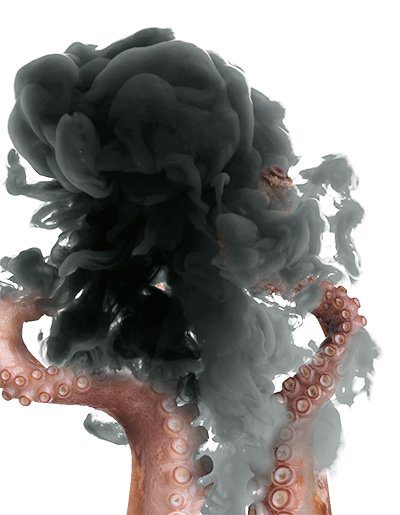
Octopus
Ooey Gooey Game Plan
Some animals gross out their
opponents. Some species of horned
lizards shoot blood from their
eyes. Vultures project vomit onto
predators 10 feet away. Octopuses
release large clouds of ink to hide
their escape. Hagfish ooze slime that
can trap predators or suffocate them.
Shocking Strategies
The electrical outlet in your
wall is 120 volts (a volt is a unit of
measurement for electricity). Several
underwater creatures fight against
predators by shooting electricity.
Electric catfish produce shocks up
to 450 volts, electric rays can fire up
to 220 volts, and electric eels can
generate up to 860 volts!
Dying to Live
Other animals trick predators
into leaving them alone by playing
dead. Virginia opossums collapse
and produce an odor that smells like
they’ve been dead for days. Many duck
species flop over and pretend to die
when they’re scared. Baby antlions
(insects that look like dragonflies as
adults) also fake their deaths, putting
on a show for over an hour!
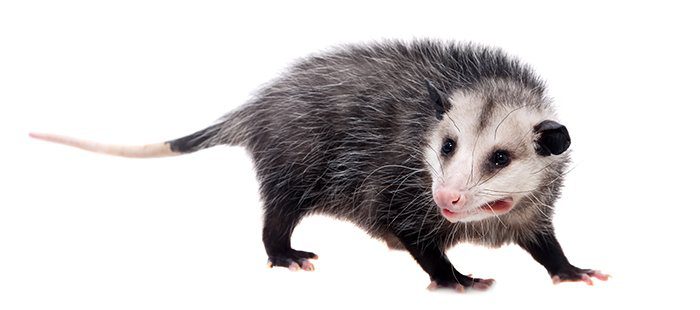
Virginia Opossum
God’s Promise
All these amazing
defenders have
something in common—they have
predators. Their unique defense
structures could have been hidden or
served other purposes before the world
was cursed. Thankfully, creatures won’t
always need defenses. Isaiah 11:6 says,
“The wolf shall dwell with the lamb, and
the leopard shall lie down with the young
goat, and the calf and the lion and the
fattened calf together; and a little child
shall lead them.” God has promised that
one day death will be destroyed, and
animals won’t eat each other anymore.
They will live in harmony with each
other—and with us.
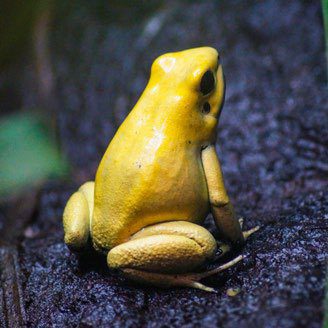
We have one of the most poisonous
animals on earth at our zoos—golden
poison dart frogs. One gram (about
the weight of a raisin) of their poison
can kill up to 15,000 people. Don’t
worry, guests can’t touch them.
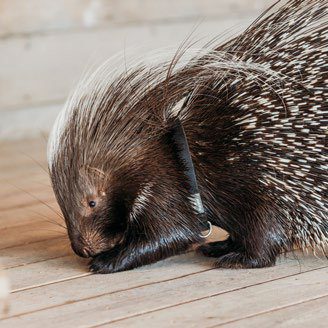
The pointy quills of our African crested
porcupines grow up to 13 inches long,
but they don’t shoot them out—that’s
a myth. Our porcupines walk around
the zoo on leashes like dogs.
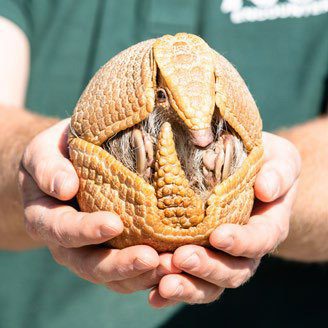
Animal armor is everywhere
in our zoos. Did you know
armadillos, turtles, and tortoises
can feel through their shells?

They love to be scratched.
The most dramatic defenders in
our zoos are the western hognose
snakes. If mimicking rattlesnakes
doesn’t scare off predators, they’ll
flip upside down and play dead.
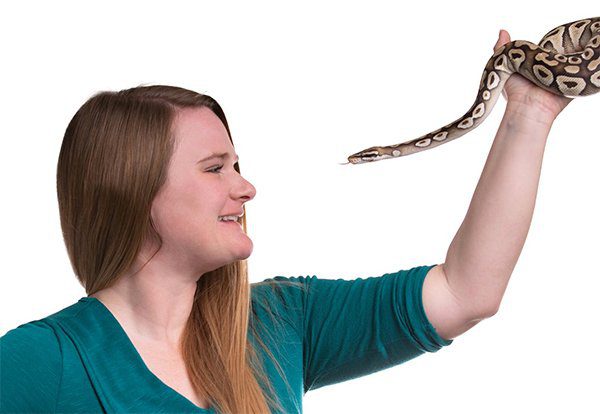
The author, Karina,
with her pet ball
python, Persephone.

